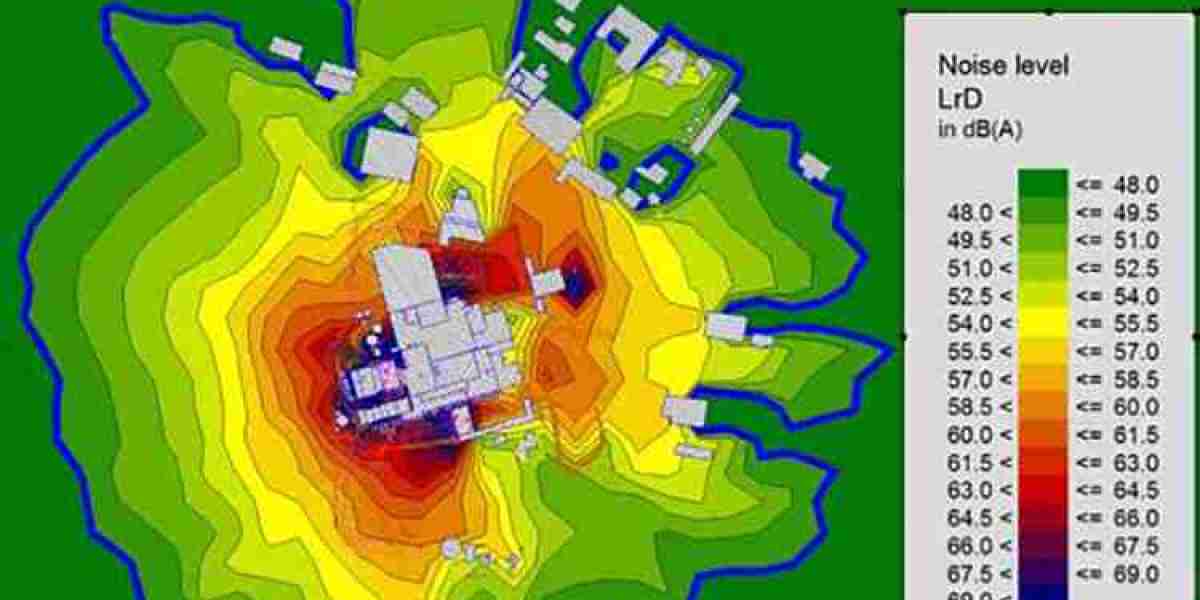Environmental Impact Assessments (EIAs) are critical tools used to evaluate the potential effects of proposed developments on the environment. Among the many factors considered, noise pollution plays a significant role, particularly for projects located near residential, sensitive ecological, or recreational areas. Noise modeling within an EIA helps predict and manage these impacts before they become real-world problems, ensuring regulatory compliance and protecting community well-being.
What is Noise Modeling?
Noise modeling is the process of using mathematical models and simulation software to predict noise levels from a given source across a geographic area. It accounts for factors such as:
- Source intensity and type (e.g., construction machinery, traffic, industrial equipment)
- Distance from the source
- Topography and ground absorption
- Meteorological conditions (wind, temperature, humidity)
- Physical barriers (buildings, vegetation, noise walls)
By accurately predicting how sound will propagate, noise modeling provides a clear picture of potential noise pollution levels and their impact.
Why is Noise Modeling Important in EIAs?
Including noise modeling in an EIA serves several important purposes:
1. Predicting Impacts
Accurate noise predictions help stakeholders understand the likely noise exposure at nearby sensitive receptors like homes, schools, hospitals, and wildlife habitats. This is crucial for assessing whether the project could lead to harmful effects on human health or wildlife.
2. Regulatory Compliance
Most jurisdictions have strict noise regulations and guidelines. Noise modeling allows project developers to demonstrate that their project will comply with permissible noise limits, or, if not, identify where mitigation is needed.
3. Informed Decision-Making
Noise modeling results are used by decision-makers, environmental agencies, and local communities to assess project viability and to set conditions or design changes that minimize environmental impacts.
4. Designing Mitigation Strategies
If predicted noise levels exceed acceptable thresholds, developers can use noise modeling to evaluate different mitigation options, such as installing sound barriers, redesigning layouts, using quieter machinery, or altering operating hours.
Steps Involved in Noise Modeling for an EIA
1. Baseline Noise Survey
Before modeling, it's important to establish the existing background noise levels through field measurements. This provides a benchmark against which future noise levels can be compared.
2. Identification of Noise Sources
All potential noise sources related to the project are cataloged, such as construction activities, traffic, plant equipment, or operational facilities.
3. Model Setup
Specialized software like SoundPLAN, CadnaA, or Predictor-Lima is used to create a digital model of the project site and surrounding area, incorporating terrain, buildings, and vegetation.
4. Simulation of Noise Propagation
The model simulates how noise will travel and attenuate over distance and through obstacles under different conditions (e.g., daytime vs nighttime).
5. Analysis and Reporting
Results are typically presented as noise contour maps, tables of predicted levels at key receptors, and assessments against regulatory standards. Recommendations for noise mitigation, if necessary, are also included.
Challenges in Noise Modeling
While modern tools have made noise modeling more accurate, several challenges remain:
- Dynamic Environments: Changes in weather or land use can affect sound propagation unpredictably.
- Complex Terrain: Hilly or urban environments complicate modeling efforts.
- Data Quality: Inaccurate input data (e.g., wrong equipment noise levels) can lead to unreliable predictions.
- Public Sensitivity: Even compliant noise levels may cause annoyance, requiring a sensitive approach to communication and mitigation.
Conclusion
Noise modeling is a cornerstone of responsible environmental planning. By integrating it into Environmental Impact Assessments, project developers can anticipate noise issues before they arise, design effective mitigation strategies, and foster better relationships with communities and regulators. In an increasingly noise-sensitive world, proactive noise management through modeling is not just good practice—it's essential.




